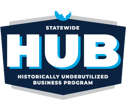At Rpharmy, we place the highest value on our customer relationships. If you know us, we’re always asking you what makes your day-to-day tedious so that we can alleviate that pain. This is how both Formweb and Rhazdrugs were created (check out how we got started here)! Naturally, when a new customer joined the Formweb family recently, we wanted to know what we were doing right and what we could do to make their lives easier.
During a recent visit with a health system implementing Formweb, they shared why they chose Formweb and the main differences they noticed between our software and their previous formulary management solution.
Here are our top 4 takeaways from that conversation.
A Whole New World of Formulary: 4 Lessons Learned Onboarding, Redefining Our Place Against Competitors
With the continued trend of hospital consolidation, the modern formulary is now going system-wide. In upcoming Safety First Blogs, I'll share more information on the benefits of merging individual formularies into one system-wide database, even when it's a mammoth job. In the meantime, here's a look at a still-relevant blog about where formulary has been and where it's going.
A hospital’s formulary initially consisted of a simple book of medications approved for patient use in that particular organization. When hospitals made their formulary available online in the late 1990s, it was basically the same book, but now on a computer screen.
USP <800> Documentation Requirements: What You Need to Know
Are hazardous drug protocols documented and accessible in your facility? Seems like a no-brainer, especially considering all of the other potential upgrades and changes your facility may have to undertake to comply with USP <800>. But it’s among the most important pieces of the regulation because what good are policies if the healthcare workers they’re designed to protect do not know about them?
Up Close: Joint Commission Requirements for Antimicrobial Stewardship Programs
We’re continuing to expand on the content from our most popular blog in 2021 - “From Our Customers: The Top 8 Questions To Expect In Joint Commission Inspections.” This time we’ll explain antimicrobial stewardship and how to prepare for the Joint Commission inspectors.
Does Your LASA List Meet Inspection Requirements?
The popularity of our most-read blog from 2021 - “From Our Customers: The Top 8 Questions To Expect In Joint Commission Inspections” - indicates that hospitals and healthcare systems continue to hustle to ensure all i’s are dotted and t’s are crossed before a visit from Joint Commission, accreditation or state board of pharmacy inspectors.
Do You Have A High Alert List And Can Users Easily Access It?
The popularity of our most-read blog from 2021 - “From Our Customers: The Top 8 Questions To Expect In Joint Commission Inspections” - indicates that hospitals and healthcare systems continue to hustle to ensure all i’s are dotted and t’s are crossed before a visit from Joint Commission, accreditation or state board of pharmacy inspectors.
Formweb “Revolutionizes” Formulary for Duke University Hospital
Like many hospitals and healthcare systems, Duke University Hospital’s online formulary consisted of a spreadsheet housed on the intranet. The spreadsheet only listed medications that were considered formulary, and there was no information provided concerning associated restrictions, policies, or guidelines. This information was not readily available or easily retrievable for nurses and other staff members.
The Modern Formulary: More Than A List of Medications
A hospital’s formulary initially consisted of a simple book of medications approved for patient use in that particular organization. When hospitals made their formulary available online in the late 1990s, it was basically the same book, but now on a computer screen.
.png?width=600&name=Safety%20First%20Blog%20Do%20Not%20Crush%20List%20(37).png)

%20(4).png?width=600&name=Rpharmy%20-%20Blog%20Images%20%20(1280%20%C3%97%20720%20px)%20(4).png)
%20(3).png?width=600&name=Rpharmy%20-%20Blog%20Images%20%20(1280%20%C3%97%20720%20px)%20(3).png)
%20(2).png?width=600&name=Rpharmy%20-%20Blog%20Images%20%20(1280%20%C3%97%20720%20px)%20(2).png)

.png?width=600&name=Rpharmy%20-%20Its%20going%20to%20be%20Epic!%20(4).png)

